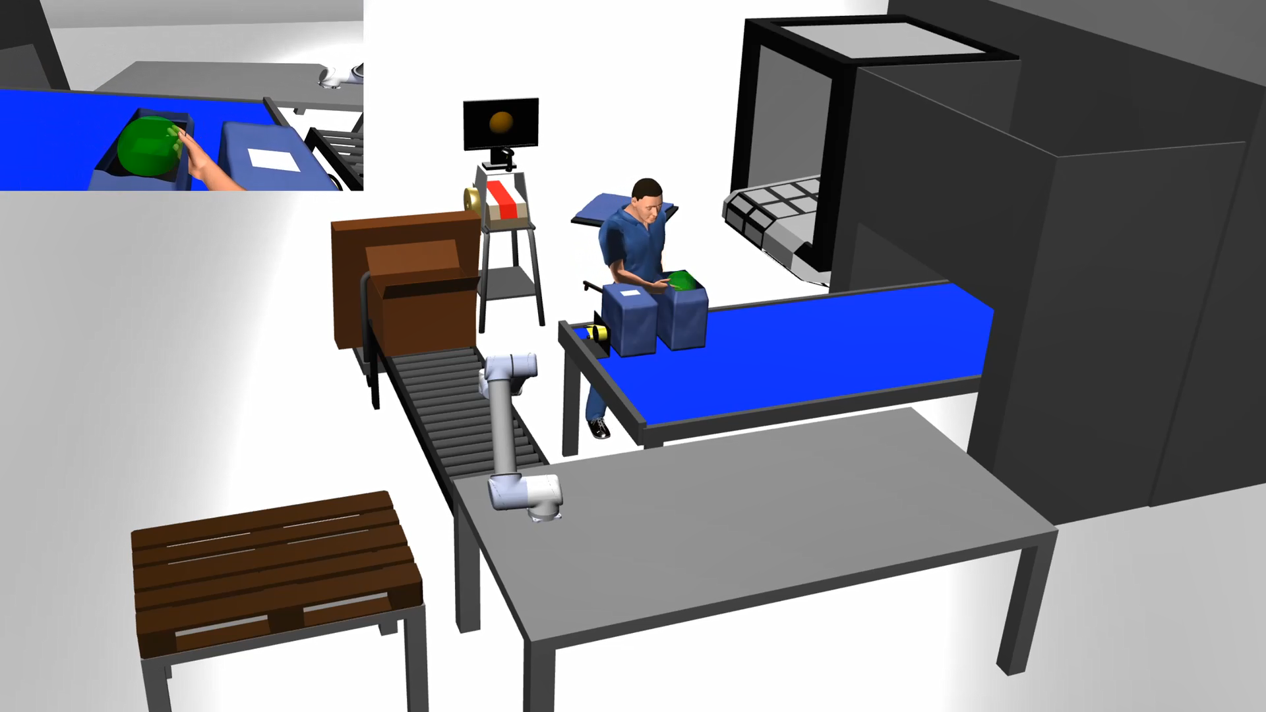Simulation can pave the way for collaborative robots

How can we make it easier to implement real collaborative robot solutions where humans and cobots work together on solving specific tasks within production?
The University of Southern Denmark (SDU), the Danish Technological Institute, Plus Pack, Tvilum and Novo Nordisk have worked together on the project “Simulation of real collaborative robot solutions.” The aim was to discover how advanced simulation tools like virtual reality can support companies when they are considering to automate their production facilities with collaborative robot solutions.
The result has been three feasibility studies regarding food packaging (Plus Pack), furniture packaging (Tvilum) and insulin pen testing (Novo Nordisk).
At the beginning of the project, the companies delivered information about their production setups in the form of CAD data as well as images and videos. The material was used by the researchers to model the cases in the simulation tool. The researchers used a Motion Capturing System to visualise the movement of employees in the production hall.
”In this project, we have made simple simulations in virtual reality where we have simulated the workspace with and without a cobot, performed analyses and looked at the effects of automating. The results indicate that cobots allow for faster and more correct execution cycles. In addition, the simulation makes it possible to start with the design and programming of the robot system immediately,” says Christian Schlette, Professor at SDU Robotics at the Maersk Mc-Kinney Moller Institute, SDU.
Virtual reality gave the answer
The company Plus Pack wanted to know if they could automate a complex packaging process that involves monotonous routine work, thereby increasing efficiency and improving the working environment for employees. Through the project, Plus Pack has gained a deeper understanding of the possibilities within collaborative robots.
”We have gained insights into how it would actually be like to have cobots in our production, and this is a really good starting point in regards to making decisions. It is very possible that we will use this approach in future automation projects,” says Simon Laigaard, Project Manager at Plus Pack.
Novo Nordisk joined the project because they were interested in gaining insights on how to automate a process where insulin pens are tested in a stationary test device.
”The use of simulation has actually made it clear to us that we should not look at a collaborative robot solution but instead at a full automation of our processes. So, it has been a bit of an eye-opener for us. The use of simulation and visualisation in VR has helped us gain a better understanding of the project and the outcome during the design phase,” says Milad Jami, Robotics & Automation Engineer at the Robotics Lab at Novo Nordisk.

Industry ready to change
Here at the end of the project, the participating companies have been handed data from their cases, which they can use internally for further assessment of their automation possibilities.
”In relation to our case where we wanted to reduce packaging costs, we have gained insights into the simulation tool and we will be able to use this for future projects. At the beginning of 2021, we will evaluate the results and look into which investments are needed in order to implement cobots – in reality,” says Sven Harry Nielsen, Project Manager at Tvilum.
In an ever-changing industry, where production facilities have to be flexible and ready for change, the simulation tools are a good way to uncover both potentials and challenges of introducing collaborative robot solutions in the companies.
”Simulations can help in clarifying the processes where collaborative robots can actually interact with employees on solving a joint process, thereby showing them where it will be useful to invest in collaborative robot solutions,” says Henrik Jacobsen, Vice Director at Centre for Robot Technology at the Danish Technological Institute.
Collaboration across
Professor Christian Schlette from SDU Robotics led the the project “Simulation of real collaborative robot solutions” and has contributed with knowledge about simulation tools and applied robot technology. Technologies that he works with on a daily basis in SDU’s Industry 4.0 Lab and which were in play when SDU Robotics won the unofficial world championship in industrial robots in 2018.
The Danish Technological Institute has contributed to the project with contact to the three companies Plus Pack, Tvilum and Novo Nordisk as well as knowledge about collaborative robots.
Contact
Christian Schlette, Professor, SDU Robotics, The Maersk Mc-Kinney Moller Institute, SDU, Phone:+45 6550 7916, mail: chsch@mmmi.sdu.dk

About this article and the project “Simulation of real collaborative robot solutions”
The collaboration project was part of RoboCluster, which is now a part of Odense Robotics. It was co-financed by the Ministry of Higher Education and Science and the Region of Southern Denmark.
This article was provided by the University of Southern Denmark.





